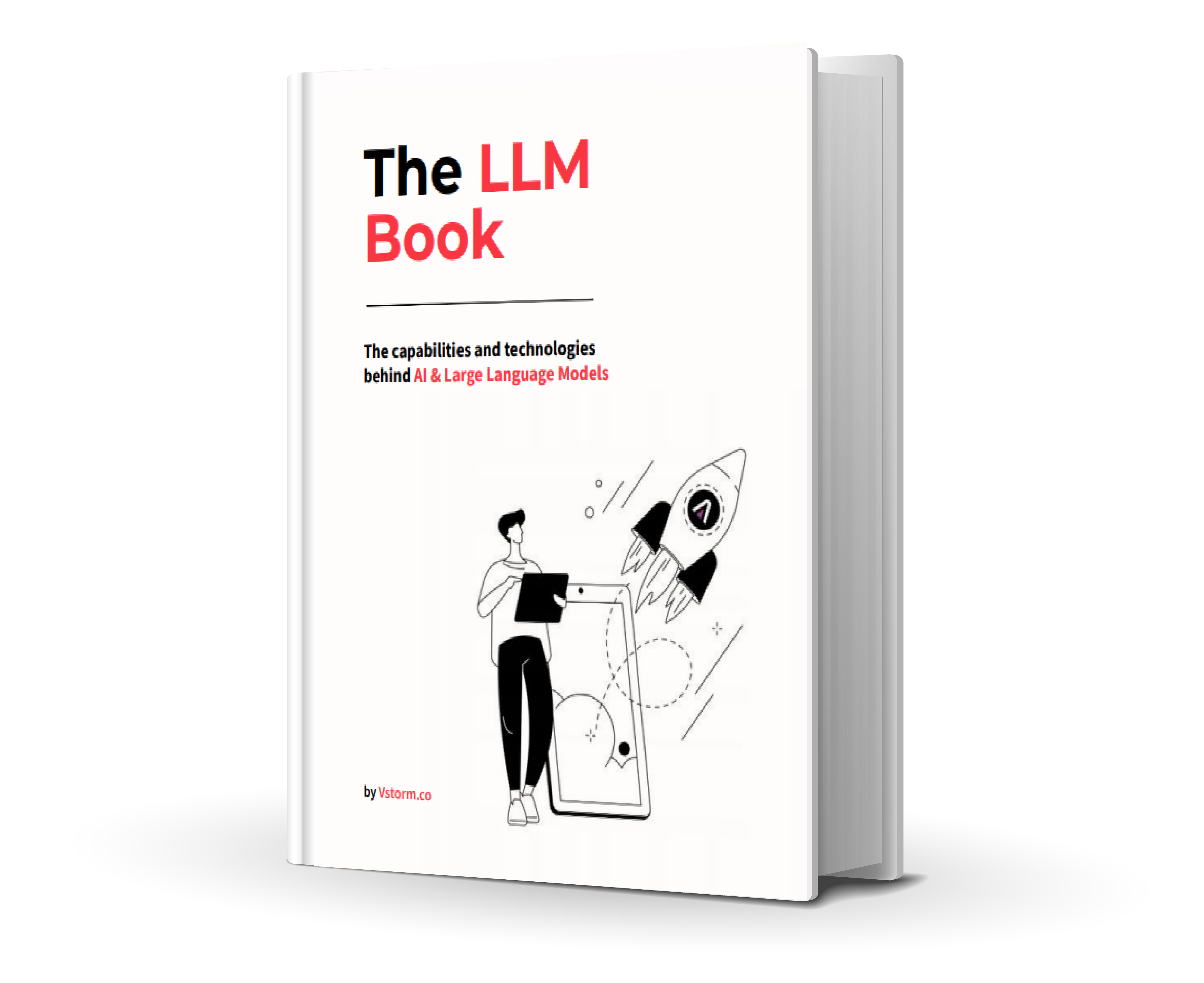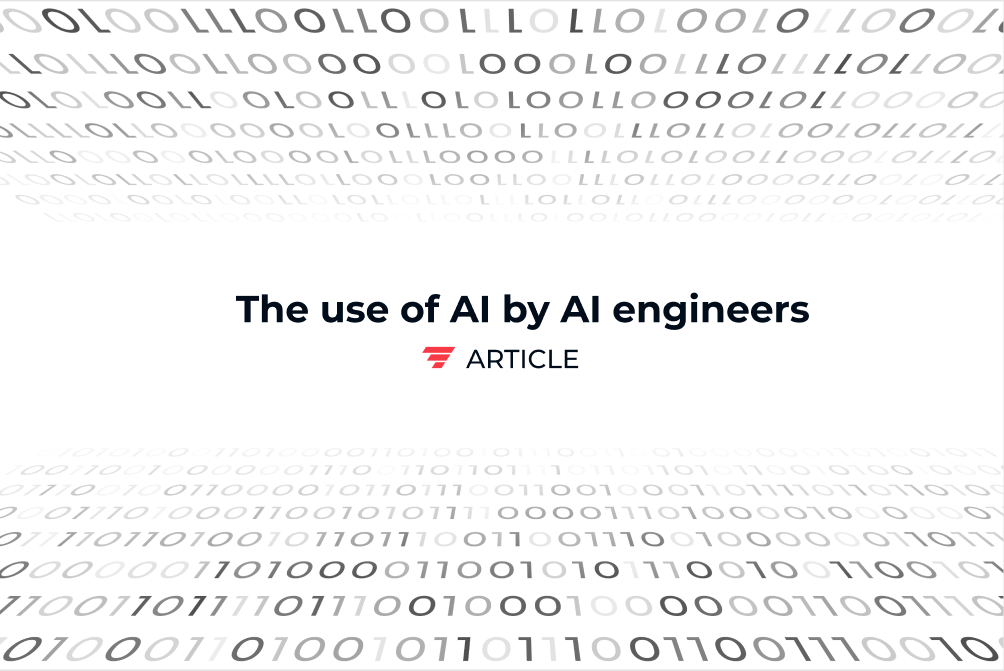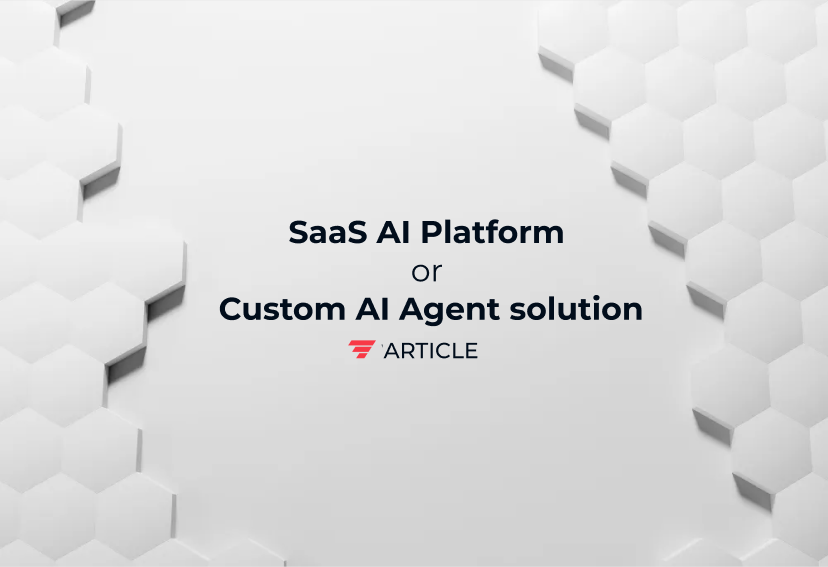Generative AI for startup owners… and not only!
As you embark on your entrepreneurial journey, it’s essential to keep up with the latest technologies to stay ahead of the game. In this chapter, we’ll introduce you to some key generative AI technologies that can help skyrocket your startup. Before we get started, let’s be clear: AI is not a silver bullet that can solve all your problems overnight. However, when used correctly, AI can help you automate mundane tasks, streamline your operations, and make better-informed decisions. It’s all about using the right AI technologies for your specific needs. Let’s make note: with AI landscape currently evolving we are focusing only on the most-up-to-date technologies at the moment of writing this ebook.
This is an excerpt from our ebook ” From zero to AI Hero. Generative AI for startups & business“. Read more here!
Generative AI
You might have heard about generative AI, which is all about creating something new from scratch. Imagine having a buddy who can write engaging articles, design eye-catching graphics, or even compose catchy tunes. Generative AI can be that buddy for your startup. It uses advanced algorithms to generate content, code, designs, or music, based on the data it has been trained on. Think of it as a creative partner that can help you scale your content production without breaking the bank.
-
Text-to-image
The next cool kids on the block are Stable Diffusion, Midjourney and Dall-e. Have you ever wished you could simply describe an image and have it magically appear? That’s where Text-to-Image technology comes in. Stable Diffusion is an advanced AI text-to-image synthesis algorithm that can generate very coherent images based on a text prompt. It’s commonly used for generating artistic images, but can also generate images that look more like photos or sketches. For startups, this can be a game-changer in areas like marketing, advertising, and product development, where visual storytelling is essential.
-
Large Language Model
As a startup owner, you’re probably juggling a lot of tasks. What if you had a smart assistant to help you communicate with your customers or team members? Large Language Model (LLM): LLM is a field of AI that focuses on generating novel combinations of text in the form of natural-sounding language. With LLM, startups can develop chatbots, automated assistants, and other tools that can communicate with customers and provide personalized assistance. That’s where Chat GPT-4 comes in. It is perfect for tasks like customer support, content creation, or even team collaboration, sales, recruitment and R&D.
-
Synthetic Data Generation
Synthetic data is information that’s artificially manufactured rather than generated by real-world events. It’s created algorithmically and is used as a stand-in for test data sets of production or operational data, to validate mathematical models and to train machine learning (ML) models. Startups can use synthetic data to validate mathematical models and algorithms before deploying them in a real-world environment. This can help to identify potential issues or biases in the model before it is put into production.
Another use case for synthetic data is to augment existing data sets. This can be particularly useful for startups that are working with limited amounts of data or data that is highly skewed towards a certain demographic or subset. By generating synthetic data that is representative of other demographics or subsets, startups can create a more diverse and representative data set.
Finally, synthetic data can be used to protect sensitive data or comply with data privacy regulations. By using synthetic data instead of real-world data, startups can reduce the risk of data breaches or other security issues.
-
Text-to-Speech (TTS)
Ever asked Siri a question or had Google Maps tell you where to turn? If you have, then you’ve interacted with Text-to-Speech technology. Simply put, TTS converts written text into spoken words. It’s what allows our devices to talk to us, making technology more accessible and interactive.
-
Audio AI Generation
Next up, we have Audio AI Generation. This tech takes Text-to-Speech a step further by synthesizing realistic sounds and voices. From creating voiceovers for animations to generating music, Audio AI is the maestro behind the scenes. It’s even been used to create entire albums and soundscapes – pretty cool, huh?
-
Video AI Generation
Last but certainly not least, we’ve got Video AI Generation. This is the big league, folks! Here, AI takes audio or text inputs and creates corresponding visual content. It can be used for everything from deepfakes (please use responsibly!) to making alterations in existing videos, and even creating new visual content from scratch.
-
Reinforcement Learning
Imagine a toddler learning to walk. They stand, wobble, fall, stand again, and with each try, they get a little bit better. That, in a nutshell, is Reinforcement Learning (RL). RL is an AI technique where a model learns to make decisions by trial and error, gradually improving over time.
Think of RL as your startup’s personal optimization guru. Whether you’re managing inventory, scheduling tasks, or figuring out the best way to allocate resources, RL can crunch the numbers, try out different strategies, and find the most efficient way forward.
It’s like a virtual game of ‘hot and cold’ – the AI gets feedback (reward or punishment) based on the actions it takes, nudging it towards the optimal solution. Over time, it learns to make better decisions, helping your startup become more efficient and competitive.
-
Natural Language Processing (NLP)
Ever wish you could teach your computer to understand human language? With Natural Language Processing (NLP), that’s possible! NLP is a branch of AI that helps machines read, understand, and make sense of human language.
Imagine the possibilities: You could analyze customer reviews to identify common pain points, automate content moderation on your platform, or even use it to analyze market sentiment on social media. The applications are nearly limitless.
NLP can turn a mountain of unstructured data into valuable insights, helping you understand your customers better and respond to their needs more effectively. And the best part? It can do all of this in real-time, giving you the insights you need when you need them.
Now that you’re familiar with some of the key AI technologies, it’s time to think about integrating them into your startup. Thankfully, there are platforms like OpenAI, Google AI, and others that offer APIs and tools to help you get started.
This is an excerpt from our ebook ” From zero to AI Hero. Generative AI for startups and business”.
Subscribe to our newsletter to be the first to receive upcoming ones!
The LLM Book
The LLM Book explores the world of Artificial Intelligence and Large Language Models, examining their capabilities, technology, and adaptation.




